REPOSITORY
Repository
Design in today’s society is viewed as a pathway to address intricate, non-linear problems that can’t be resolved solely through technological or scientific approaches alone. While these technologies aim to meet human needs, the main challenge lies in creating design solutions that truly resonate with the user. Designers must provide an understanding of people’s needs and the surrounding space to help them translate the needs into solutions. These readings will help me aid in this journey - to make a well-crafted prototype for designers and the viusally impaired.
Find a curated selection of my most significant resources below. For the complete list, please refer to my are.na archive.
Books
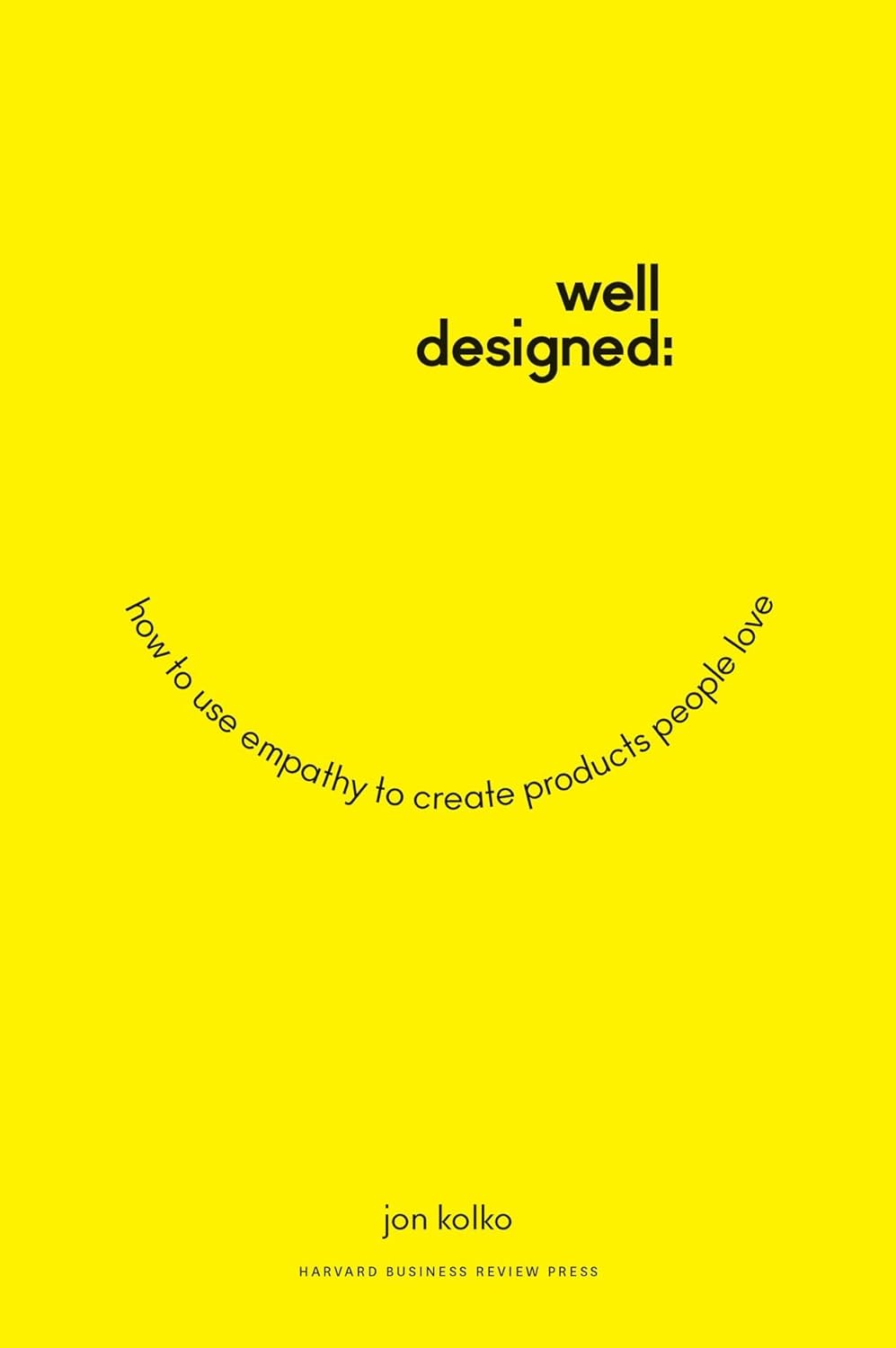
Well Designed:How to Use Empathy to Create Products People Love
Kolko, Jon. Well-Designed: How to Use Empathy to Create Products People Love. Harvard Business Review Press, 2014.The book sets out a four-step approach to product design that has empathy at its core. The first step is to determine a product-market fit, by observing and embracing signals from users such as changes in attitude. Second is understand people's behavior, by conducting research out in the field.
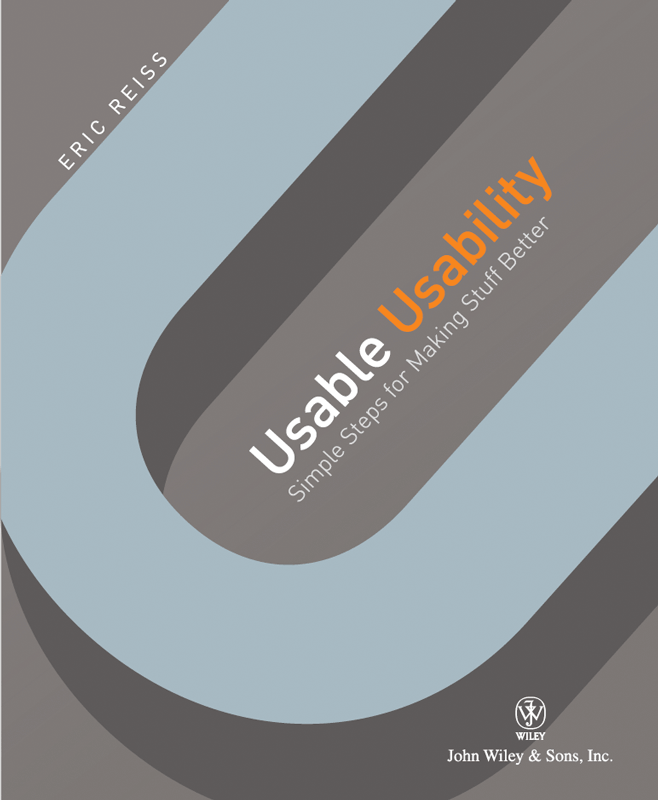
Usable Usability: Simple Steps for Making Stuff Better
Reiss, Eric. Usable Usability: Simple Steps for Making Stuff Better. John Wiley & Sons, Inc., 2012.this book teaches you how to understand a user's needs, divulges techniques for exceeding a user's expectations, and provides a host of hard won advice for improving the overall quality of a user's experience. World-renowned UX guru Eric Reiss shares his knowledge from decades of experience making products useable for everyone.
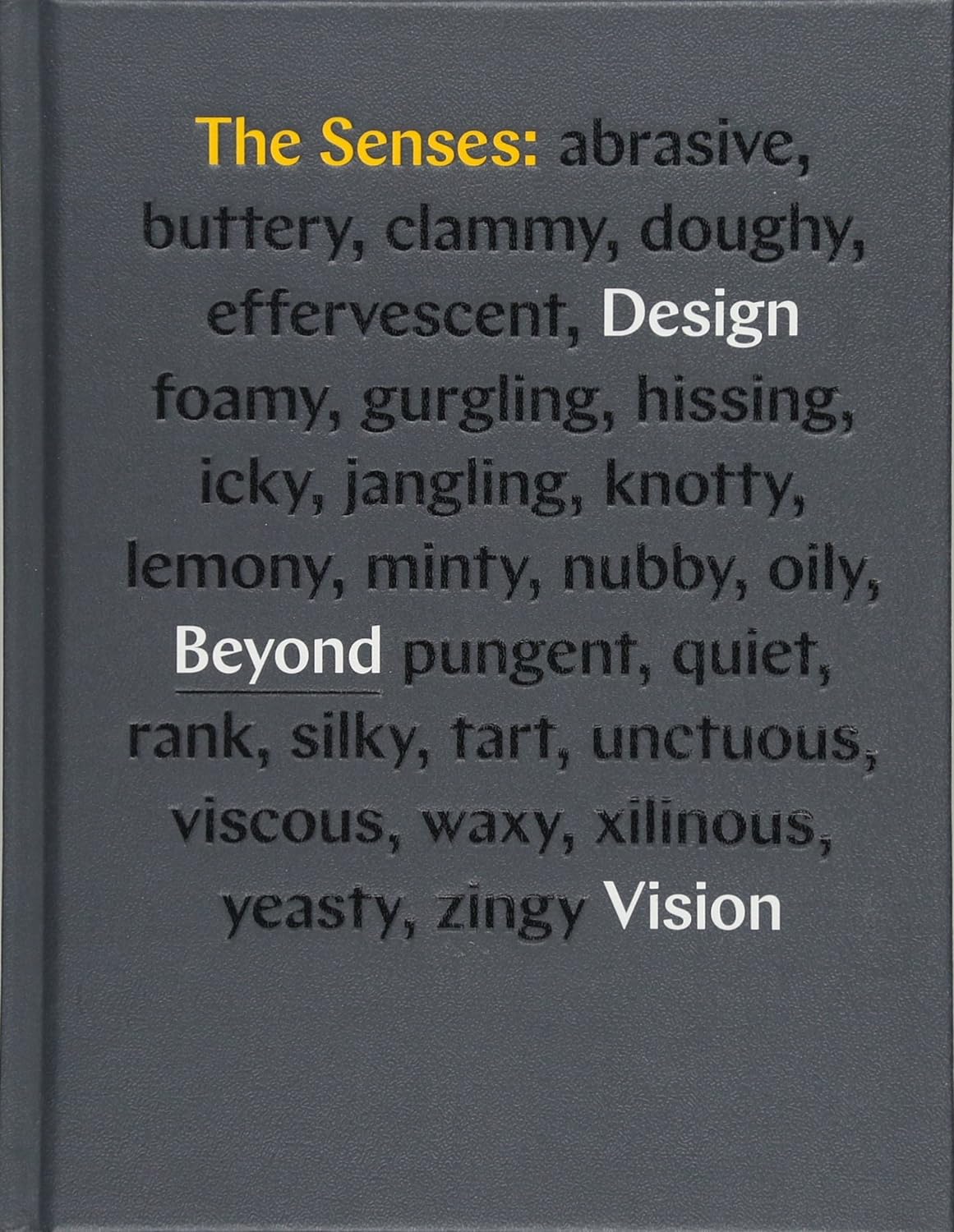
The Senses: Design Beyond Vision
Lipps, Andrea, and Lupton, Ellen. The Senses: Design Beyond Vision. 2018.A powerful reminder to anyone who thinks design is primarily a visual pursuit, The Senses accompanies a major exhibition at the Cooper-Hewitt Smithsonian Design Museum that explores how space, materials, sound, and light affect the mind and body. Multisensory design can solve problems and enhance life for everyone, including those with sensory disabilities.
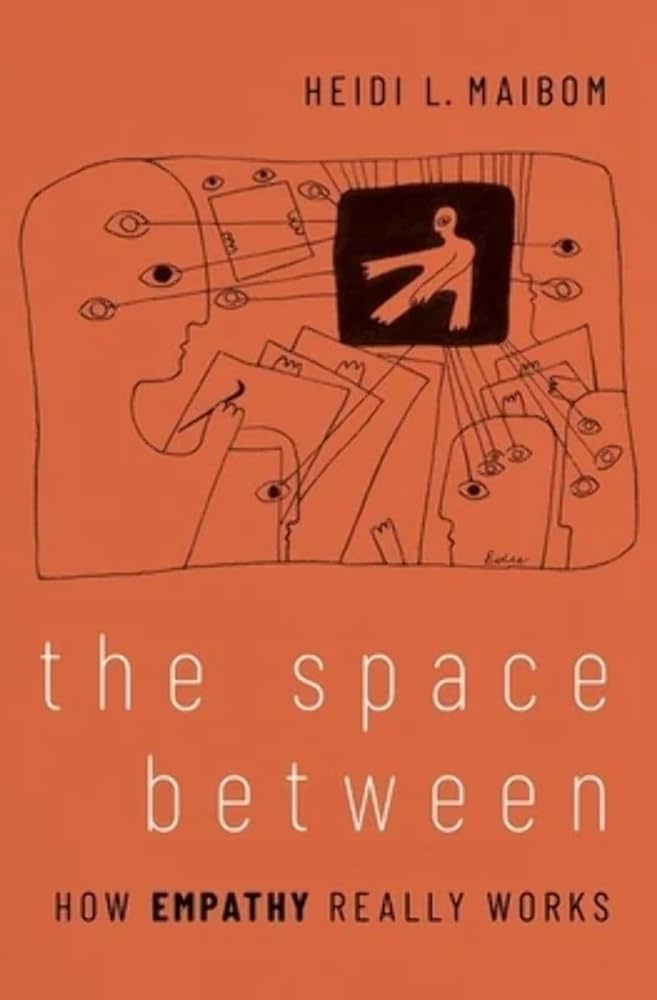
The Space Between: How Empathy Really Works
Maibom, Heidi L. The Space Between: How Empathy Really Works. 2022.In The Space Between, Heidi Maibom combines results from philosophy, psychology, and neuroscience to argue that rather than making us more biased or partial, empathy makes us more impartial and more objective. The problem is that we don't see the world objectively in the first place, Maibom explains.
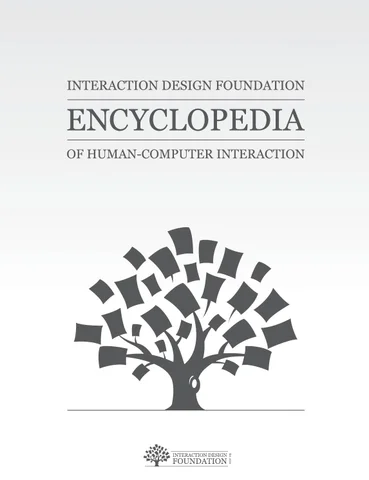
The Encyclopedia of Human-Computer Interaction, 2nd Ed.
Stephanidis, Constantine. “Design for All”. The Encyclopedia of Human-Computer Interaction, 2nd Ed. Interaction Design Foundation, 2014.This encyclopedia covers a wide range of Human Computer Interaction related topics such as concepts, design, usability, evaluation, innovations, and applications of HCI in organizations around the globe. It includes contributions from advisors from around the world as well as real life experiences and cases of HCI.
Articles
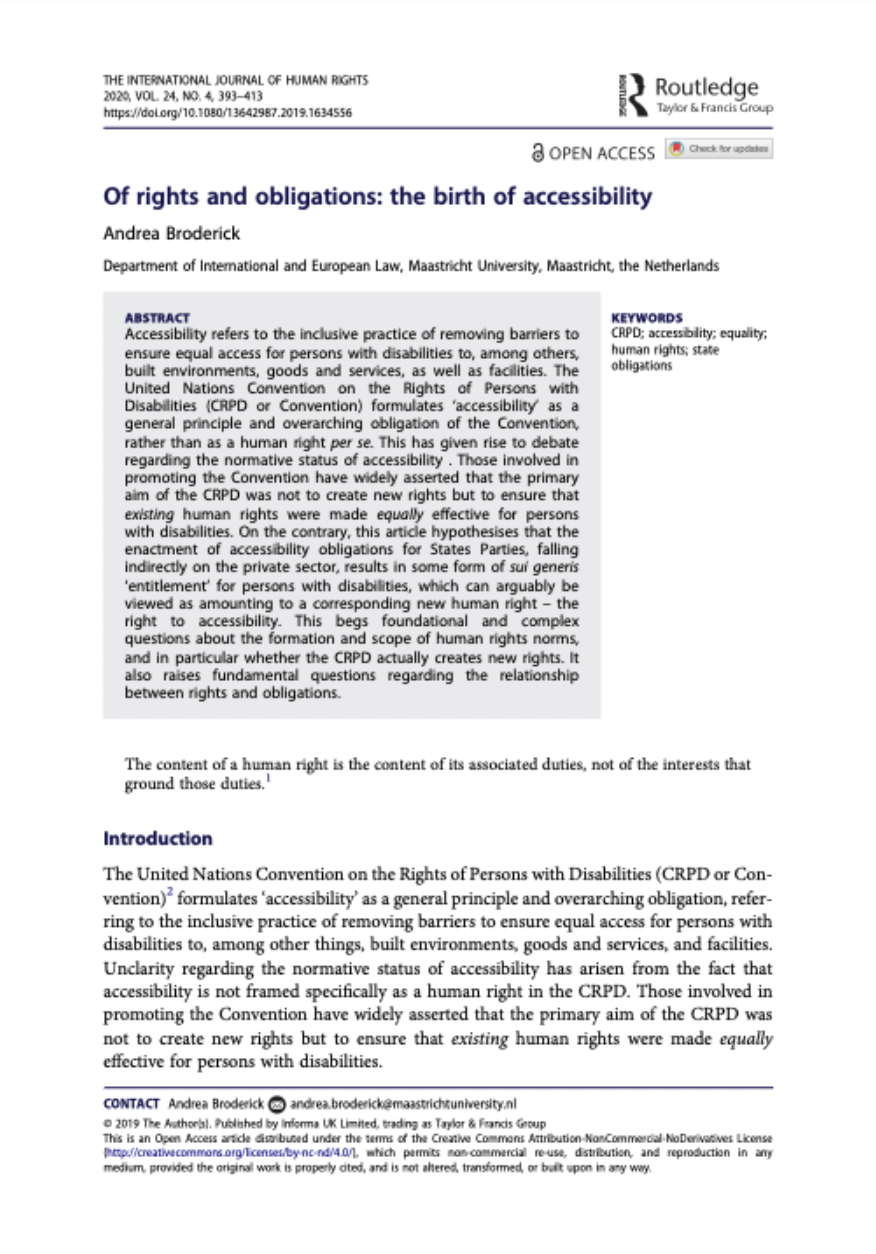
Of rights and obligations: the birth of accessibility
Broderick, Andrea. Of rights and obligations: the birth of accessibility. The International Journal of Human Rights 2020, Vol. 24, No. 4, 393-413, https://doi.org/10.1080/13642987.2019.1634556.Broderick delves into the emergence of accessibility, exploring the interconnected notions of rights and obligations. Broderick discusses the evolving landscape surrounding accessibility, highlighting the pivotal moments that have shaped its trajectory. The article emphasises the reciprocal relationship between rights and obligations in the context of making various aspects of life more accessible, shedding light on the societal and legal frameworks that have contributed to this ongoing process.
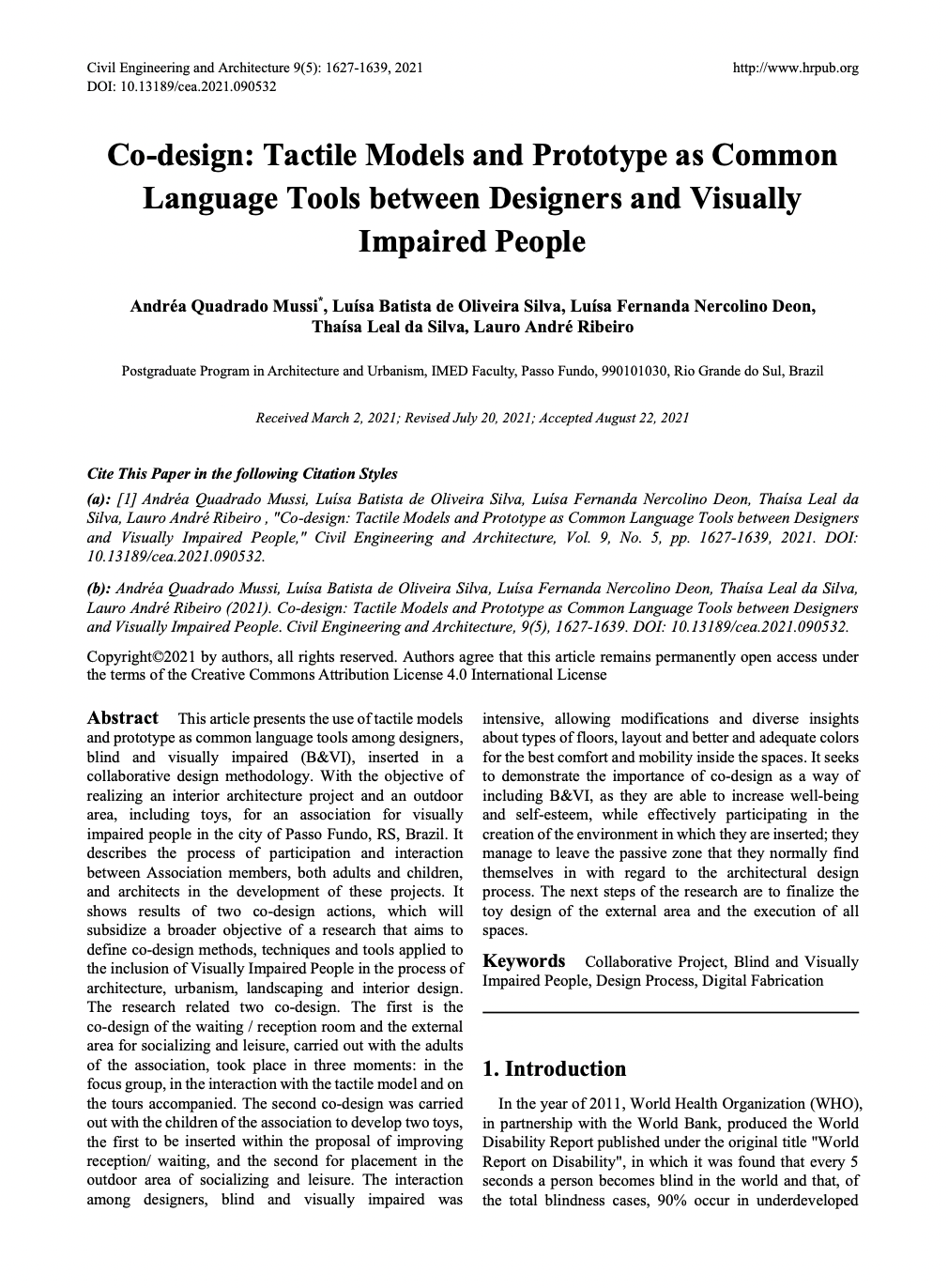
Co-design: Tactile Models and Prototype as Common Language Tools between Designers and Visually Impaired People
Mussi, Andréa Quadrado et al. Co-design: Tactile Models and Prototype as Common Language Tools between Designers and Visually Impaired People. 2021, 10.13189/cea.2021.090532.The article explores the concept of co-design as facilitated by tactile models and prototypes. The authors discuss how these tangible tools serve as a shared language between designers and visually impaired individuals, fostering collaborative design processes.
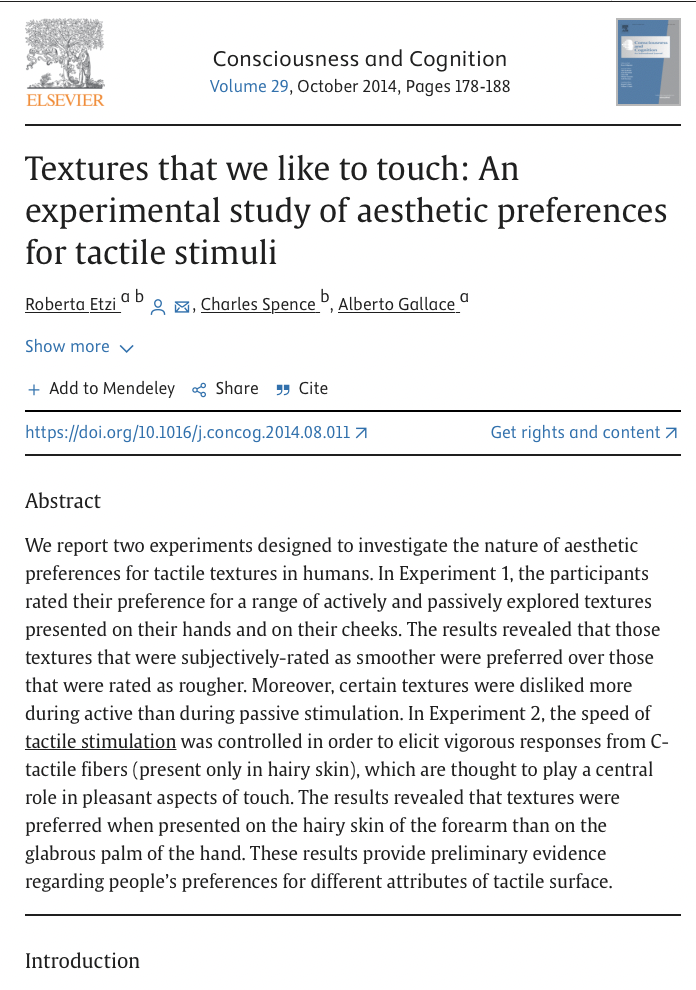
Tactile aesthetics: textures that we like or hate to touch
Faucheu, Jenny et al. Tactile aesthetics: Textures that we like or hate to touch, Acta Psychologica, Volume 201, 2019, 102950, ISSN 0001-6918, https://doi.org/10.1016/j.actpsy.2019.102950.The article delves into the realm of tactile experiences by examining the aesthetic aspects of textures. The authors explore the subjective nature of preferences and aversions to different textures, shedding light on the diverse sensory perceptions individuals have when interacting with tactile stimuli.
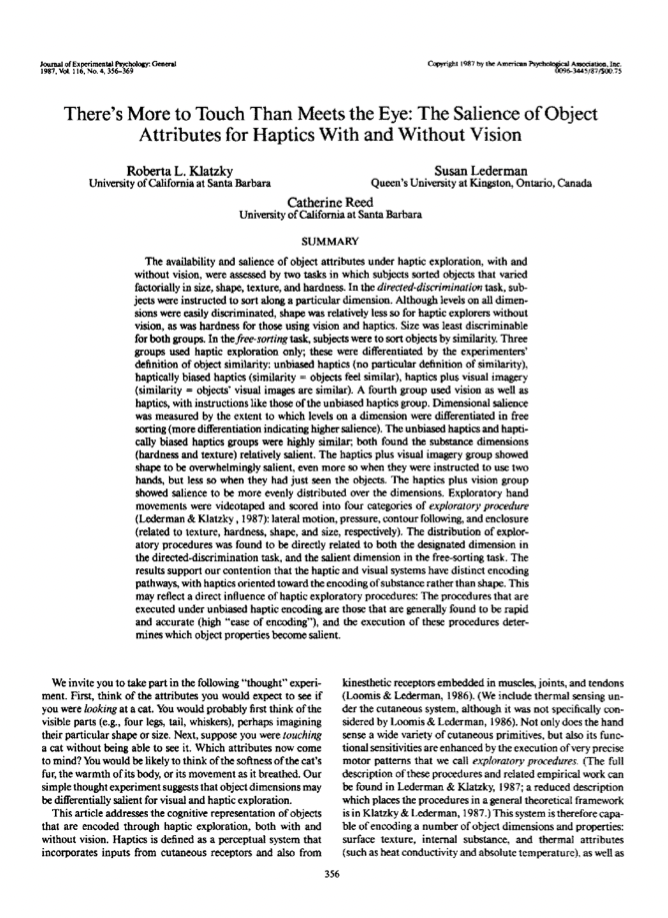
There’s More to Touch Than Meets the Eye: The Salience of Object Attributes for Haptics With and Without Vision
Klatzky, Roberta et al. There's More to Touch Than Meets the Eye: The Salience of Object Attributes for Haptics With and Without Vision. Journal of Experimental Psychology: General. 1987, 116. 356. 10.1037/0096-3445.116.4.356.Roberta L. Klatzky and Catherine L. Reed delve into the multifaceted nature of touch experiences. The study explores the significance of object attributes in haptic perception, both in individuals with and without vision. The authors provide insights into how tactile interactions extend beyond visual aspects, emphasizing the complex interplay between touch and perception.
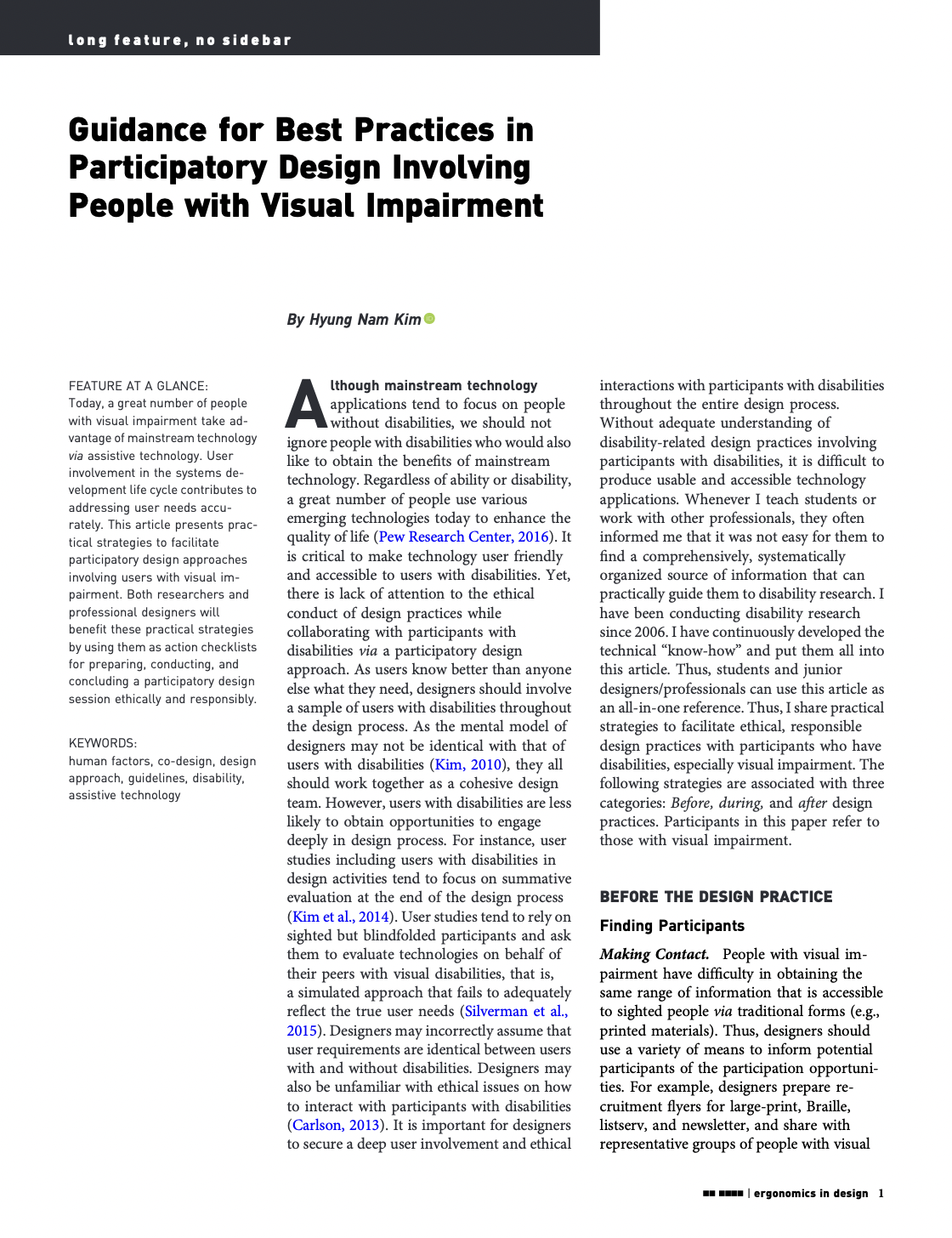
Guidance for Best Practices in Participatory Design Involving People with Visual Impairment
Kim, Hyung N. “Guidance for Best Practices in Participatory Design Involving People with Visual Impairment.” Ergonomics in Design, 0(0), 2021, https://doi.org/10.1177/10648046211058248.The article provides insights and recommendations for effective participatory design processes specifically tailored to individuals with visual impairments. Kim's work offers valuable guidance on fostering inclusive and collaborative design approaches that consider the unique perspectives and needs of people with visual impairment, contributing to the development of best practices in this domain.
Casestudies
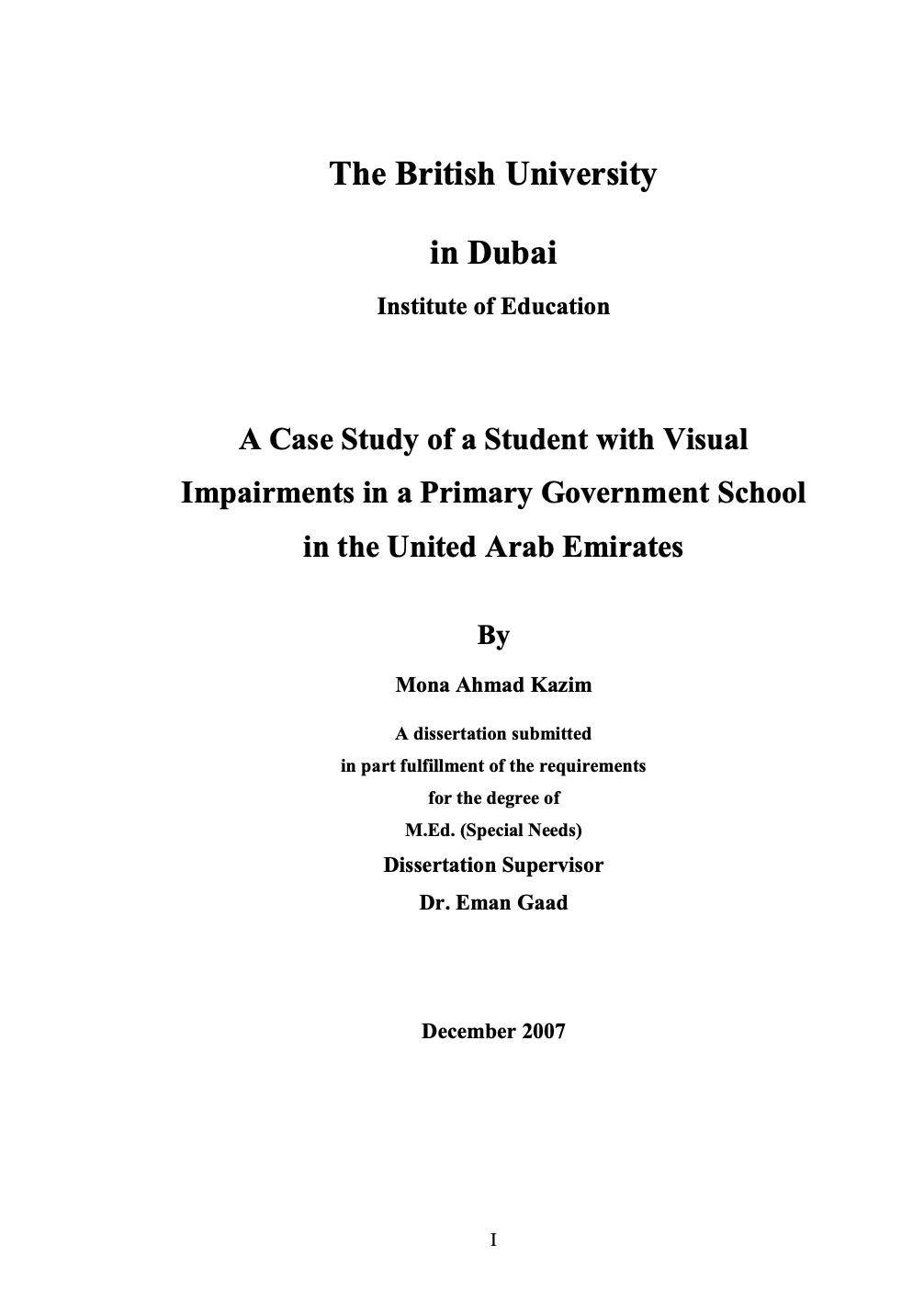
A Case Study of a Student with Visual Impairments in a Primary Government School in the United Arab Emirates
Kazim, Mona. A Case Study of a Student with Visual Impairments in a Primary Government School in the Untied Arab Emirates. The British University in Dubai. Institute of Education, 2007, https://bspace.buid.ac.ae/buid_server/api/core/bitstreams/b7b56214-15d5-4292-8bd5-5e4c36e62246/contentMona Ahmad Kazim presents a case study, focusing on a student with visual impairments enrolled in a primary government school in the United Arab Emirates. Kazim's work offers a detailed examination of the challenges and experiences faced by the student, providing valuable insights into the educational context and support systems for individuals with visual impairments in this region.